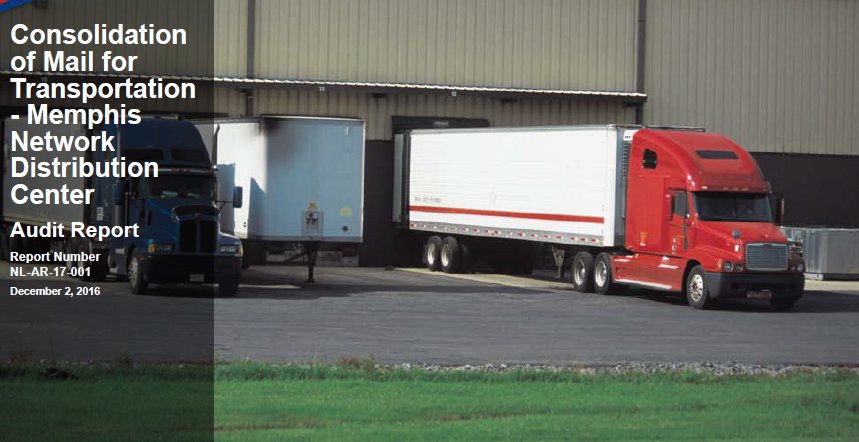
Background
As of June 1, 2016, the U.S. Postal Service had over 8,300 highway contract routes (HCR). HCR contracts are competitive fixed-price contracts the Postal Service awards to contractors to transport mail between post offices, network distribution centers (NDC), and other designated stops.
The Postal Service has 21 NDCs it uses to increase operational efficiency by consolidating mail processing and dispatch. In addition, at 19 of the NDCs there are also consolidation deconsolidation facilities (CDF). The CDFs originated from a fiscal year (FY) 2010 pilot that used contractors to combine the contents of two or more NDC trailers of mail into one when the combined mail contents of the trailers exceed 100 percent.
CDF contractors remove mail from containers and load it back onto the trailer in a process known as bed-loading. The goal is to maximize cubic space use, increase operational efficiency, and reduce transportation costs. The Postal Service spends over $20 million annually for the 19 CDF contractors. During the pilot, the Postal Service intended to save about 30 percent of HCR costs by using the CDF.
We selected the Memphis NDC to review based on its number of transportation lanes, its geographical location, and prior OIG audit work.
Our objective was to assess the efficiency of consolidating mail (loading, unloading, and trailer utilization) for long-distance HCRs at the Memphis NDC.
What the OIG Found
We determined the Postal Service’s consolidation (loading, unloading and trailer utilization) of HCRs at the Memphis NDC is not efficient.
We found NDC personnel were automatically sending trucks to the CDF, even when they could have consolidated the mail at the NDC because the combined mail contents of the trailers did not exceed 100 percent.
Specifically, during our Memphis NDC site visit, we identified 36 of 38 trucks, or 95 percent, that were sent to the CDF although they did not require any consolidation because the trailer utilization did not exceed 100 percent.
The remaining two trucks, or 5 percent, were paired with other trailers, bringing the consolidated trailer utilization above 100 percent. Postal Service personnel correctly sent these trailers to the CDF for bed-loading.
The unnecessary consolidation activities occurred because Memphis NDC Standard Operating Procedures do not provide specific instructions for when to send trucks to the CDF. Additionally, there was no on-site Postal Service manager at the CDF to monitor consolidations. Memphis NDC managers are currently in another building and only make site visits when requested by the CDF contractor.
NDC management was not aware of Postal Service Headquarters’ CDF Network’s Standard Operating Procedures, which provides specific instructions for on-site reviews and modifications.
Consequently, the Postal Service paid the Memphis CDF contractor over $4,700 for 36 trips that did not need bed-loading. Based on our review of trailer utilization data for FYs 2014 through 2015 and FY 2016, Quarters 1 through 3, we estimated the Postal Service could have avoided about $1.1 million annually in contractor costs if NDC personnel had consolidated mail when utilization was less than 100 percent.
Additionally, our analyses showed a decrease in the number of trips requiring the CDF to bed-load or re-containerize mail. We estimated the Postal Service could put about $1.25 million to better use annually in FYs 2017 through 2018 by re-evaluating the need for the CDF contract.
What the OIG Recommended
We recommended management update the NDC SOP to include specific instructions for sending HCR trucks to the CDF for consolidations; implement Postal Service Headquarters’ CDF Network’s SOP, which provides instructions on site reviews and modification decisions; and re-evaluate the need for the CDF and modify the contract accordingly in coordination with Postal Service Headquarters and the area office.
